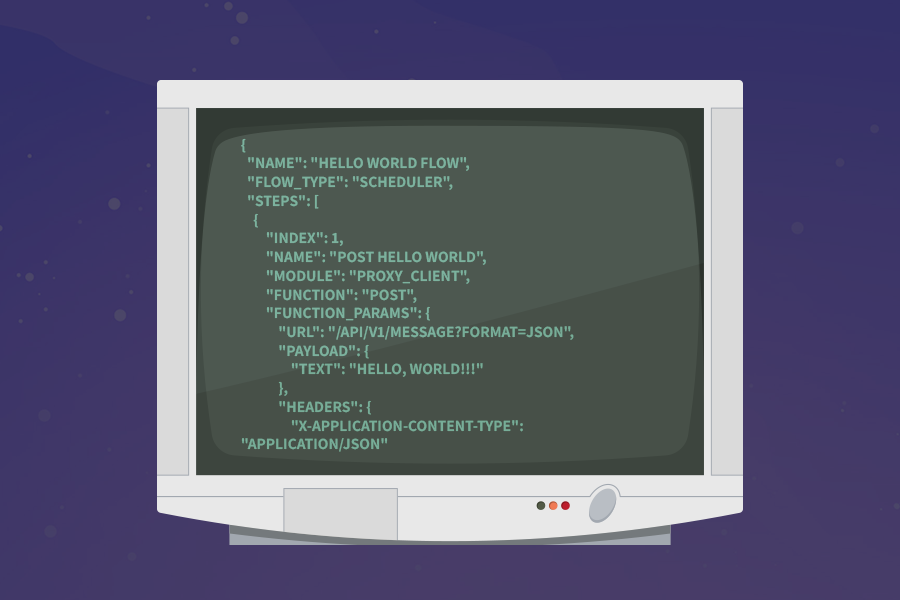As a programmer, the likelihood of “Hello world” being the first thing you print with a simple line of code is pretty high. And if you’re part of the uninitiated when it comes to the wonderful world of programming, you probably know the phrase anyway.
In a way, “hello world” symbolizes something at the very core of Strawbay – we’re here for both Devs and Clickers*.
*Clickers – a lighthearted term for non-programmers, of course said with a wink 😉

What makes up a good integration?
We’re a bunch of geeks with a broad range of industry experience, but everyone has a common denominator somewhere along our CV lines: B2B SaaS.
Our system architects and developers have been sailing the code seas for quite some time, developing everything from startup software to enterprise solutions. Over the years, we’ve seen the importance of solid integrations, and what does and doesn’t make up one.
One plate of Code Spaghetti, please
Most of us have seen it: integrations hardcoded directly into the application’s codebase. Soon enough, you lose control and have no oversight of dependencies or how changes will affect the system. The integrations can’t be reused in a smooth way, and your once shiny platform starts looking more and more like a heavy plate of code spaghetti.

With Strawbay, you keep your codebase clean and separate all integrations from it by managing them, and their code, in our platform. We have our own Domain-Specific Language, which makes the code easier to read and maintain.
The Black Box Phenomenon
As managers, procurators, and overall business people, we’ve seen how projects have either reached the sky or sunk faster than a meme coin, often due to strong or weak system integrations. Many times, external integration partners is coupled with hefty pricing and little to no insight into how the integrations work or perform. The “black-box” phenomenon in integration solutions is indeed real.
Sure, the provider builds the integration to your needs, and it should work. But you have no insight into how data flows or the status of connections. If you want to make changes, everything needs to go through them. This is not how we do business at Strawbay.

With our Integration Management Platform, we offer full transparency. You can see all integrations, their status, and how data flows. If you want to make changes or add something, it’s up to you. Of course, if you prefer, we can make the changes for you and build the integrations, but it’s not mandatory.
The future of integrations?
Seeing into the future is always a monumental task. There’s no shortage of acronym bonanzas with terms like Decentralized Autonomous Organizations (DAO), Domain-Specific Languages (DSL), Event-Driven Architecture (EDA), new standards for API documentation, Low-code and No-code, Machine Learning Operations (MLOps), and just AI in general.
So what do we at Strawbay have in mind for the future of integrations?
If we’ve learned anything from human tech history, it’s that we can make rough guestimates, but usually, we’re surprised and caught off guard by things we never could have imagined (like smartphones, daily photos of overpriced pimientos de padrón, and the importance of cats on the internet, to name a few).
Let’s talk underlying needs and outcomes – not acronyms
Given the general history of tech, we’re quite cautious when it comes to predicting which technologies will lead the way in integrations. We prefer to focus on the underlying and emerging business needs and align our solutions accordingly, developing or matching the most suitable technology for the job.
Here’s a high-level summary of what we’re focusing on:
- A need to synchronize and harmonize data
- Automate processes between tools
- Improve customer experience
- Real-time data
- Staying compliant
- Understanding the data and how it moves
- Integrating without the need for developers
- Understanding costs and impacts of integrations
- Autonomy in processes within and between systems

Interested in learning more about our Integration Platform?
With Strawbay’s iPaaS solution, you can connect all your business systems effortlessly – without the need for complex in-house development or maintenance-heavy custom integrations. Curious? Anchor up and take a few minutes to learn more about how we can supercharge your business with smooth integrations.




